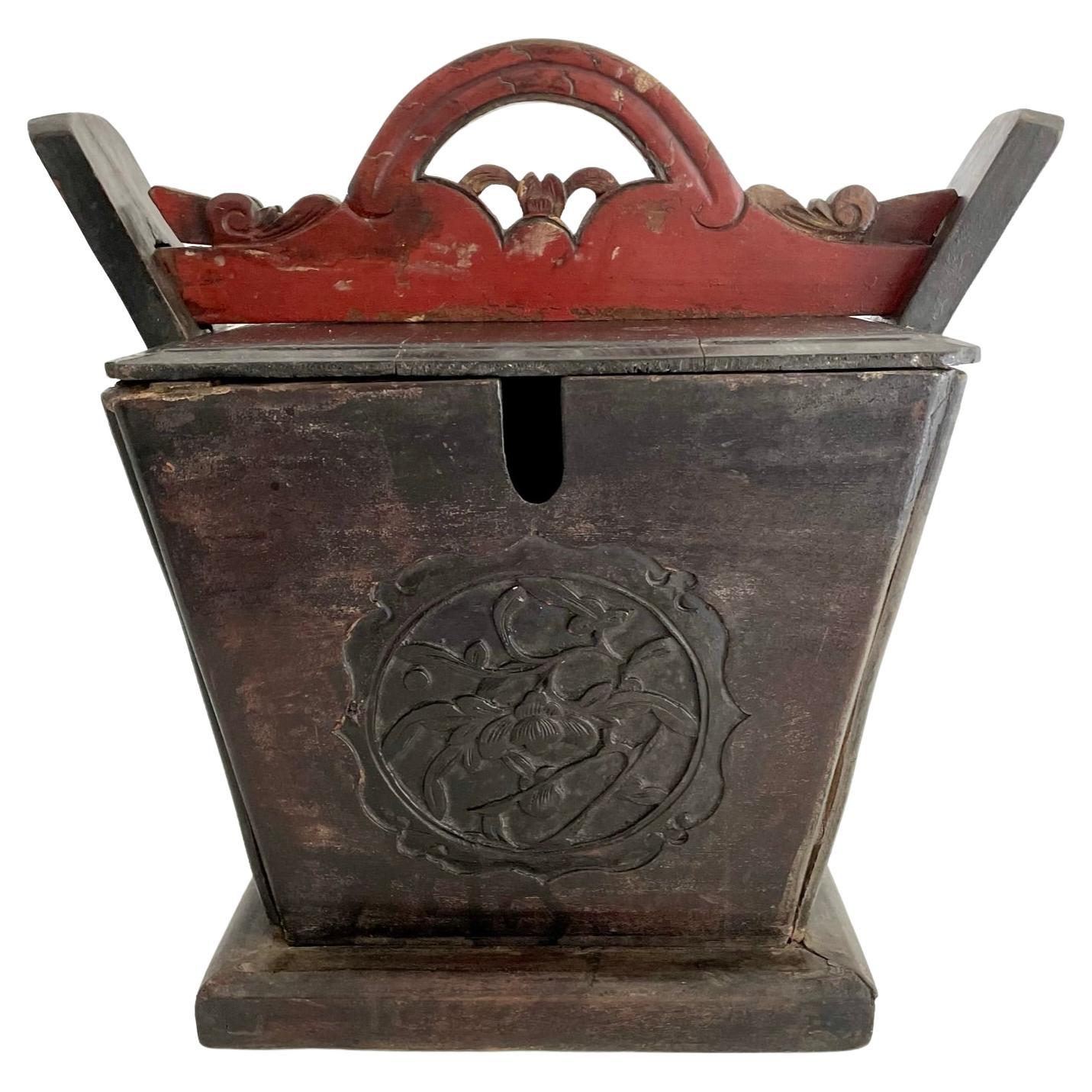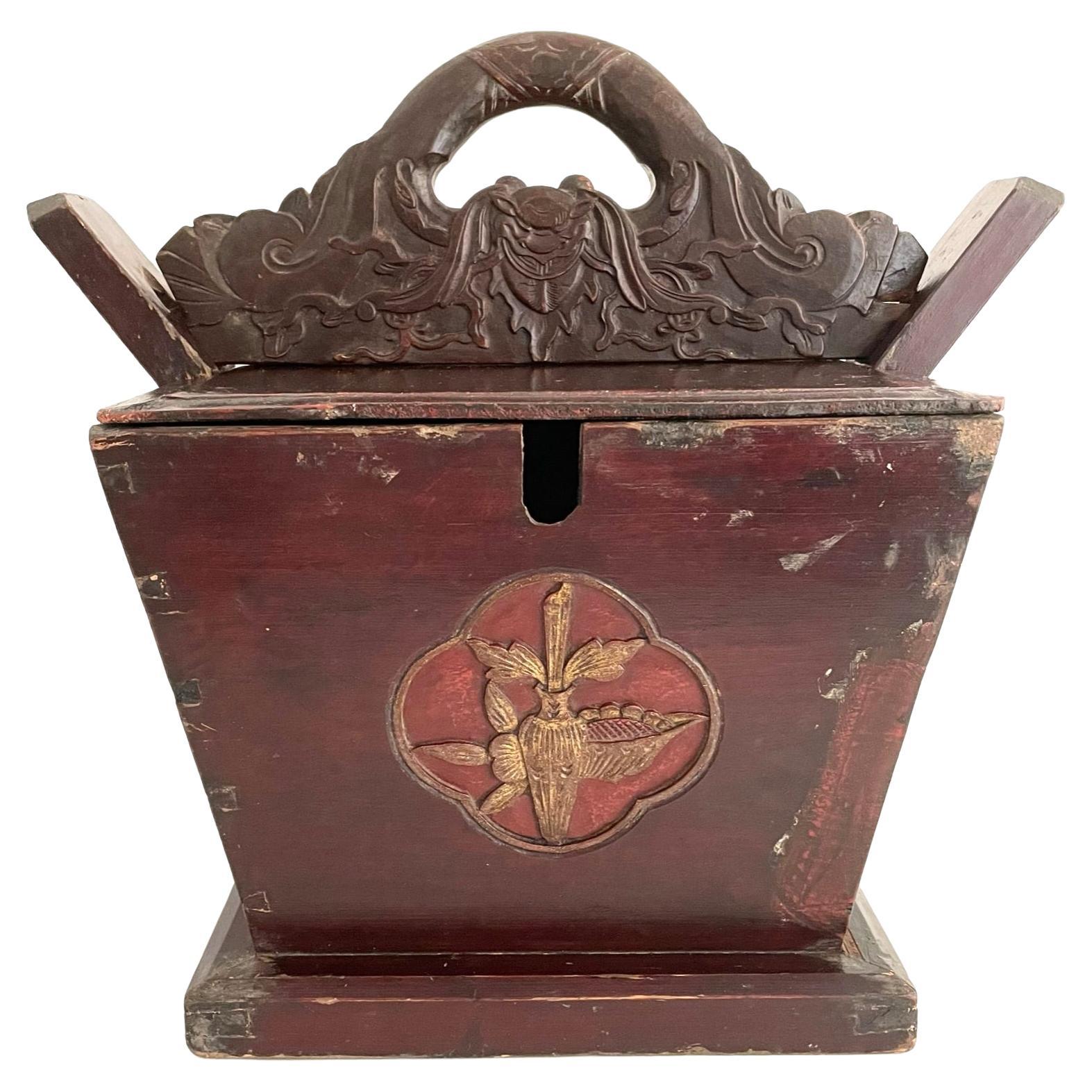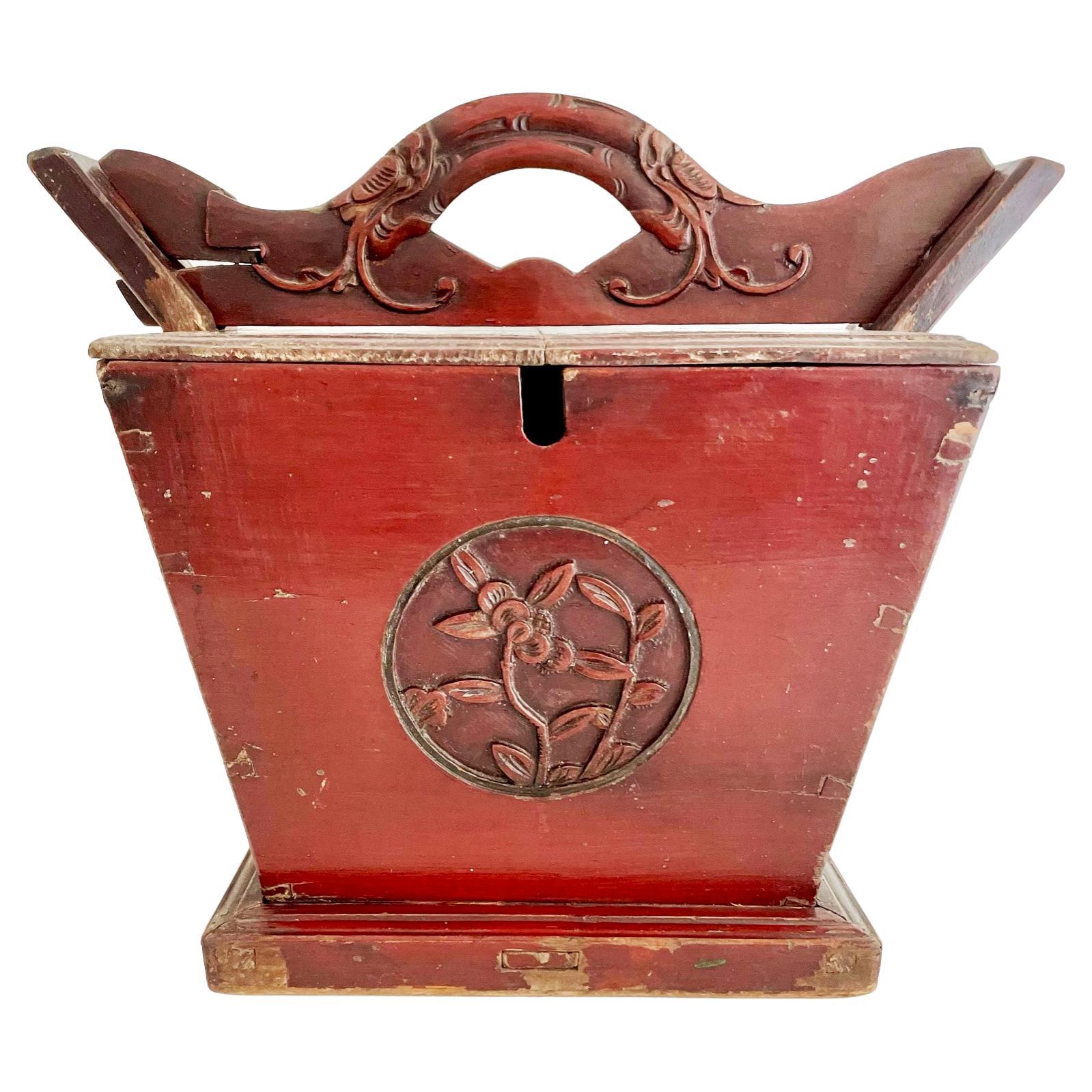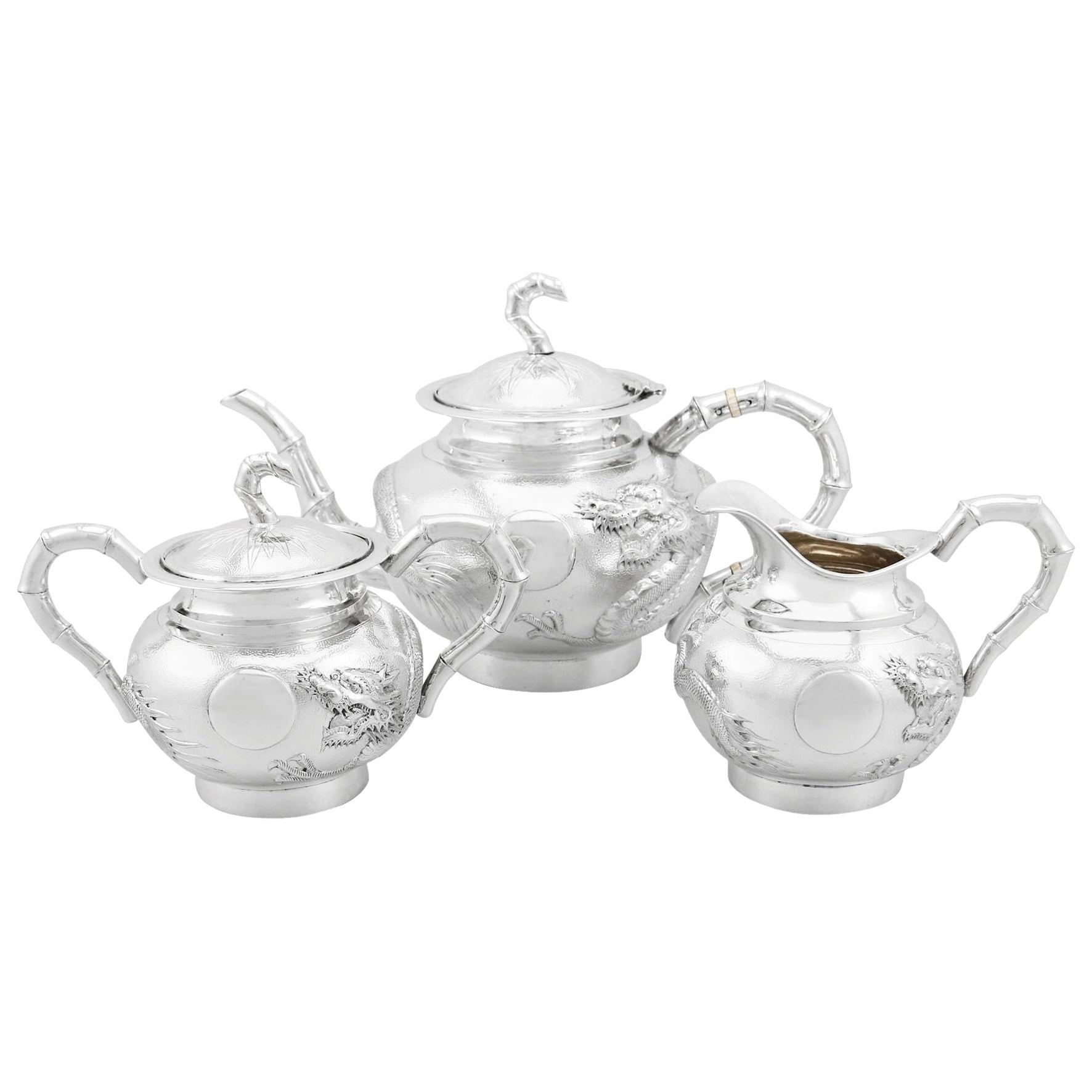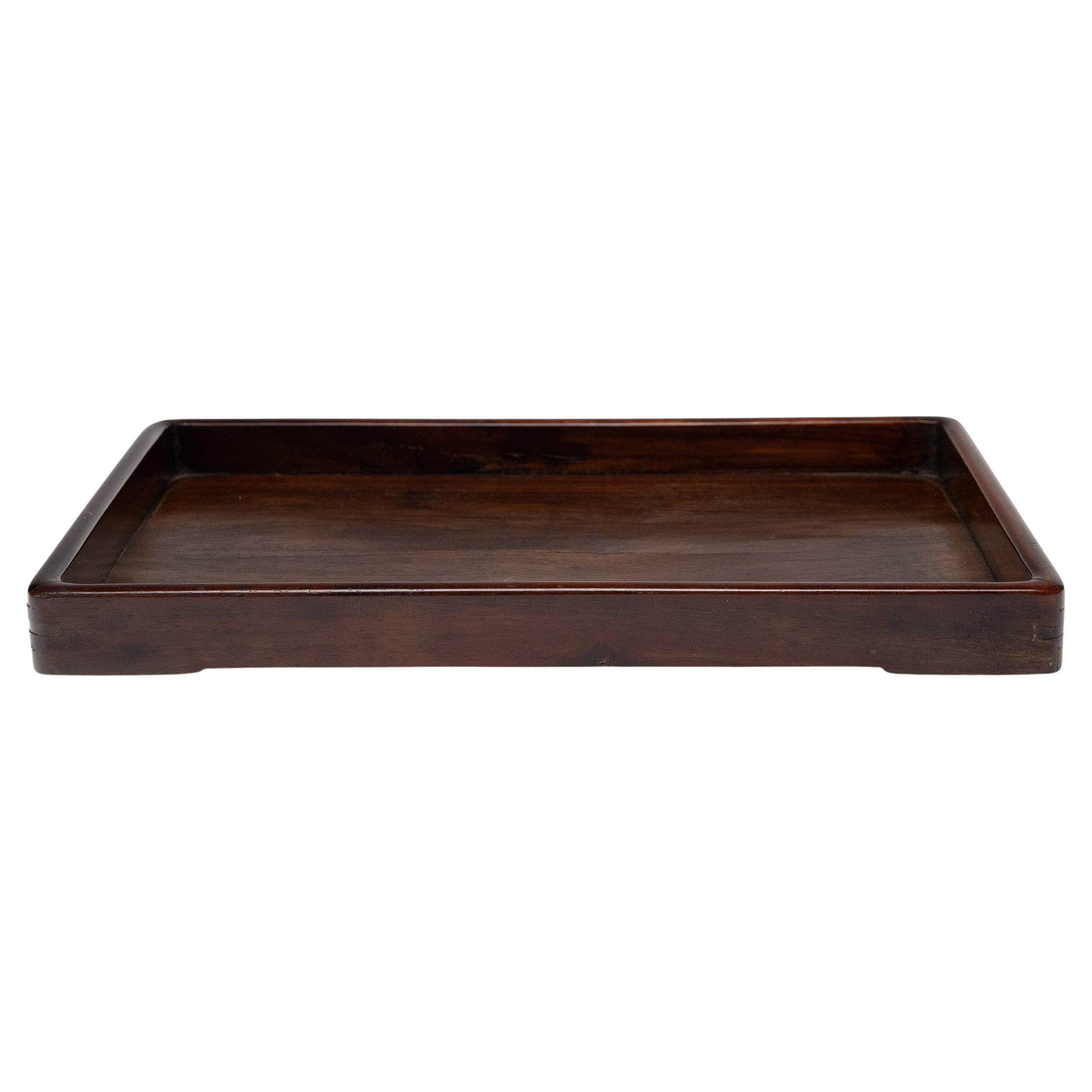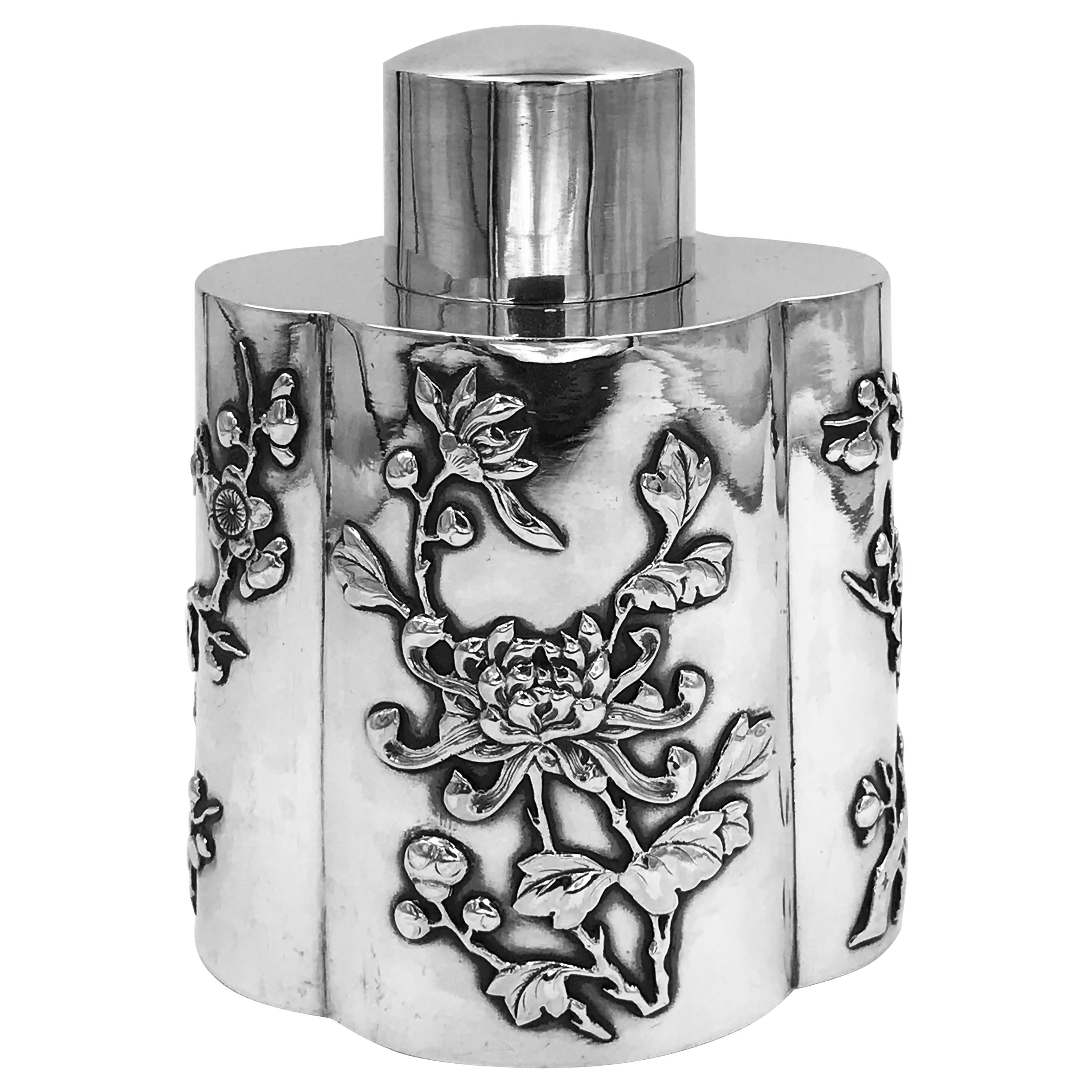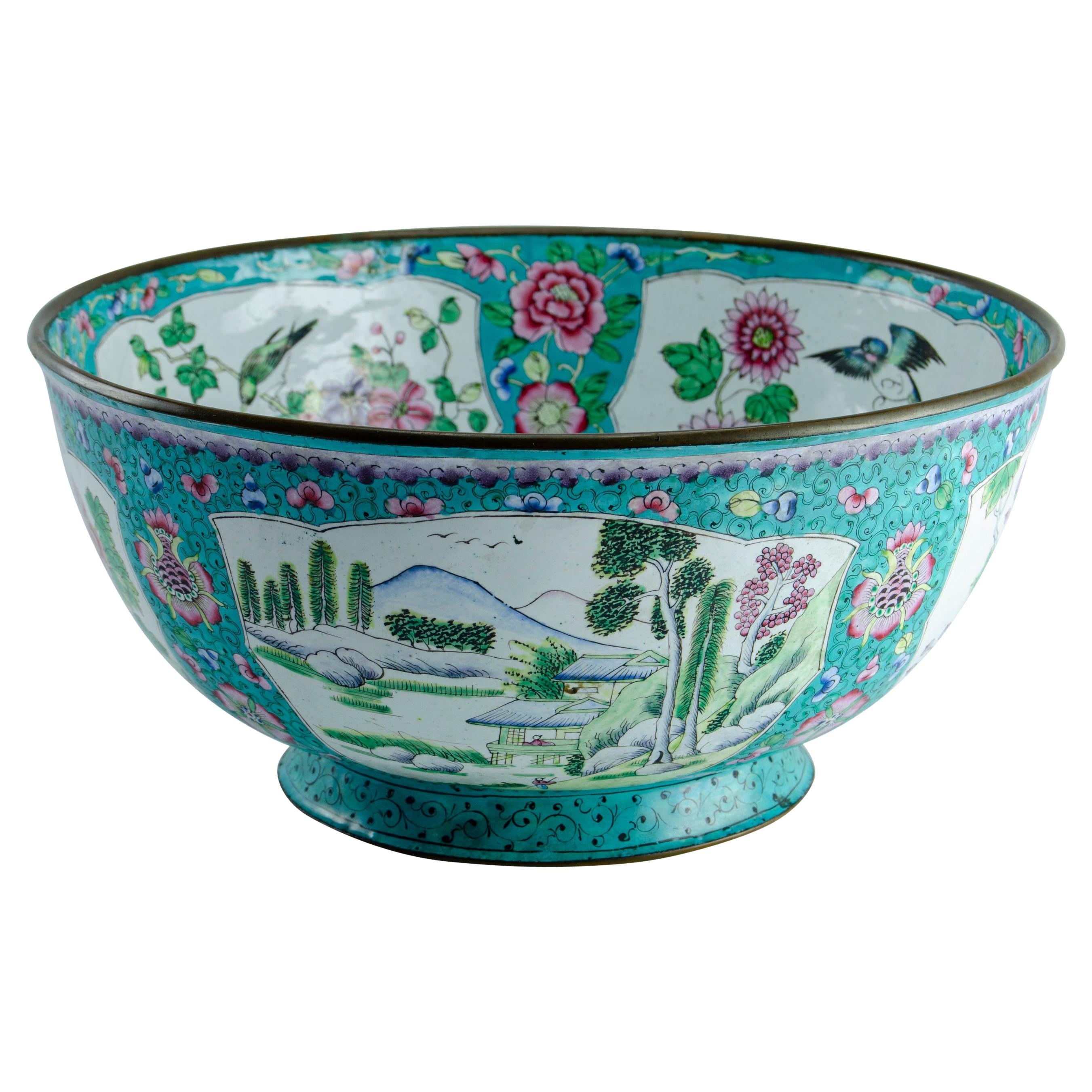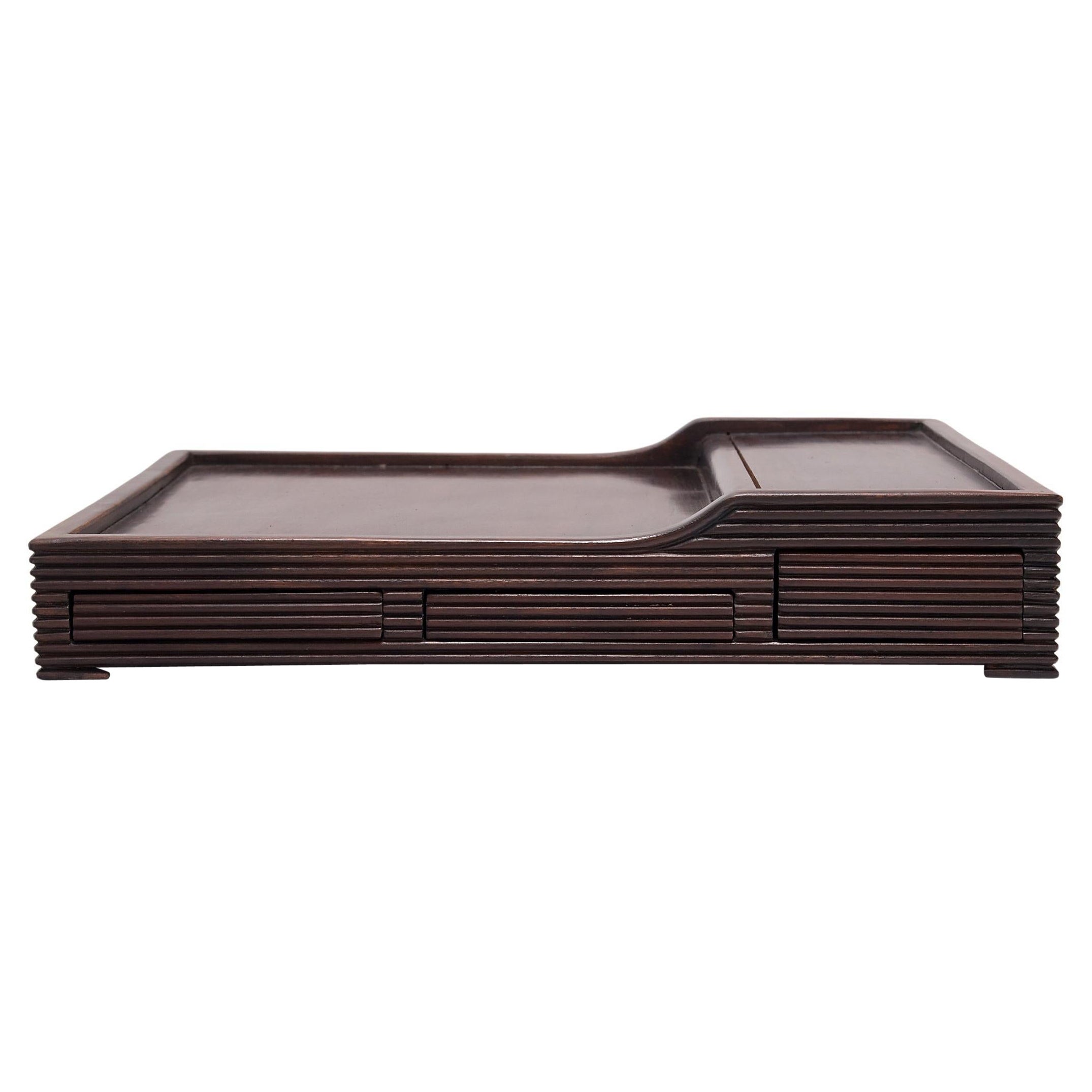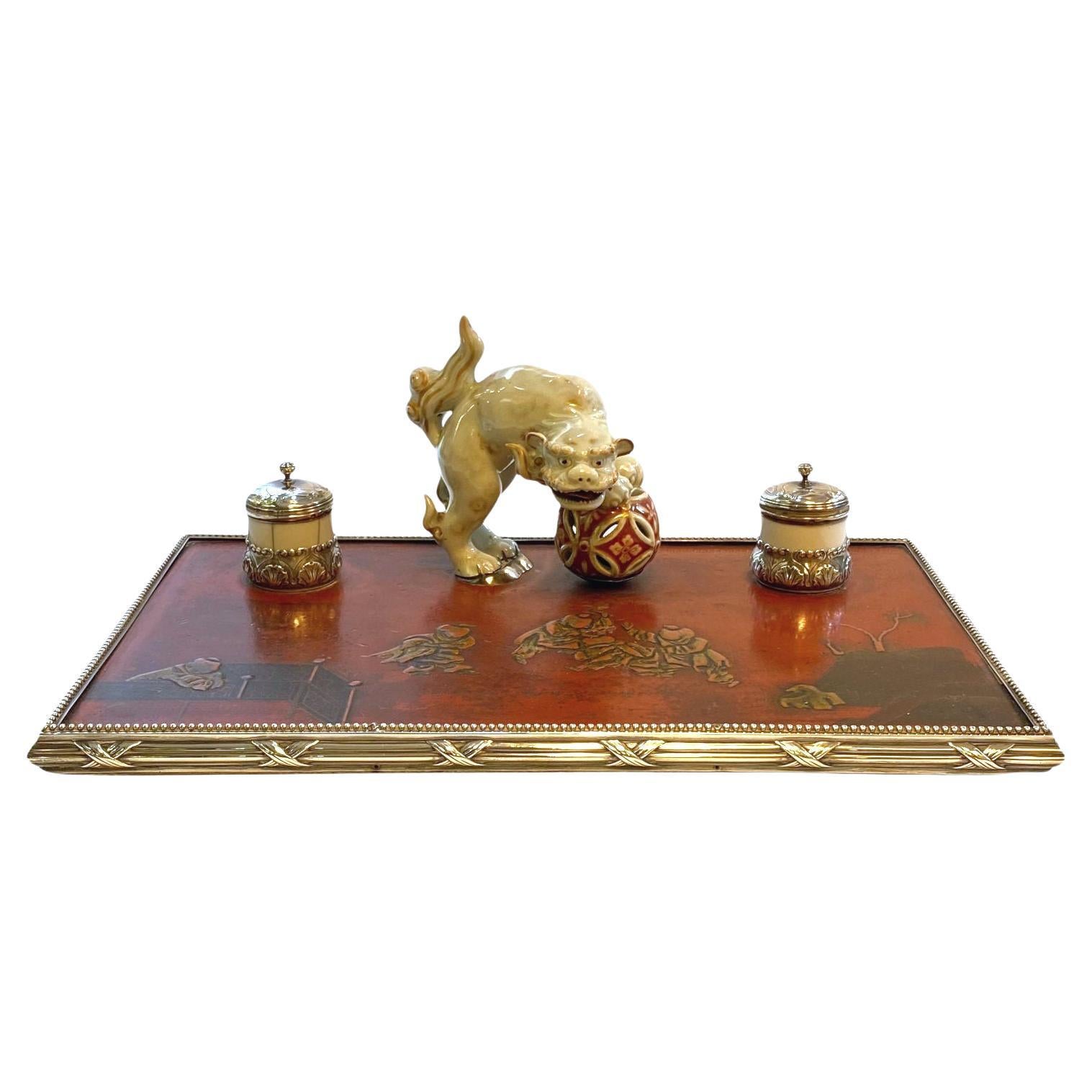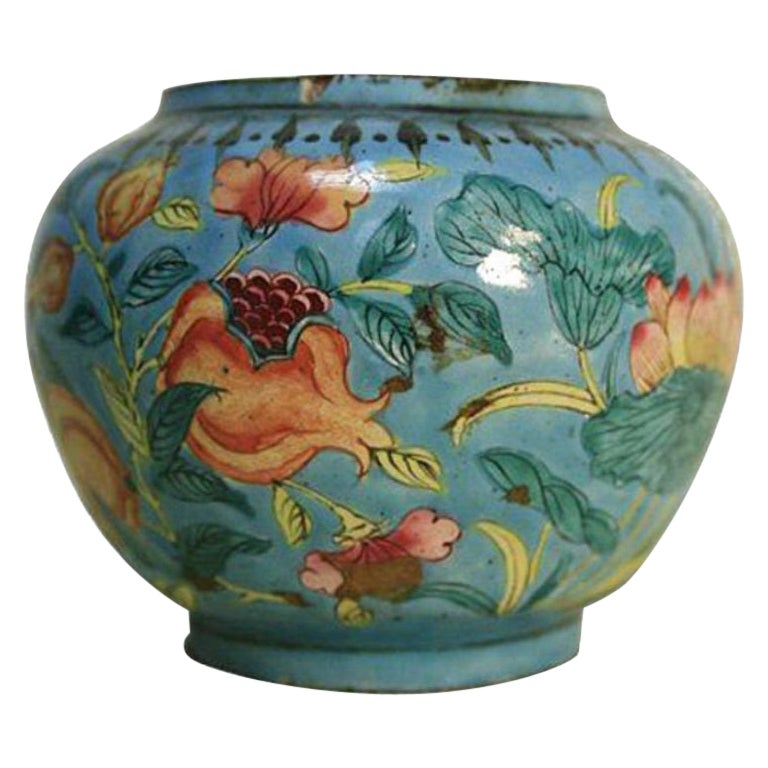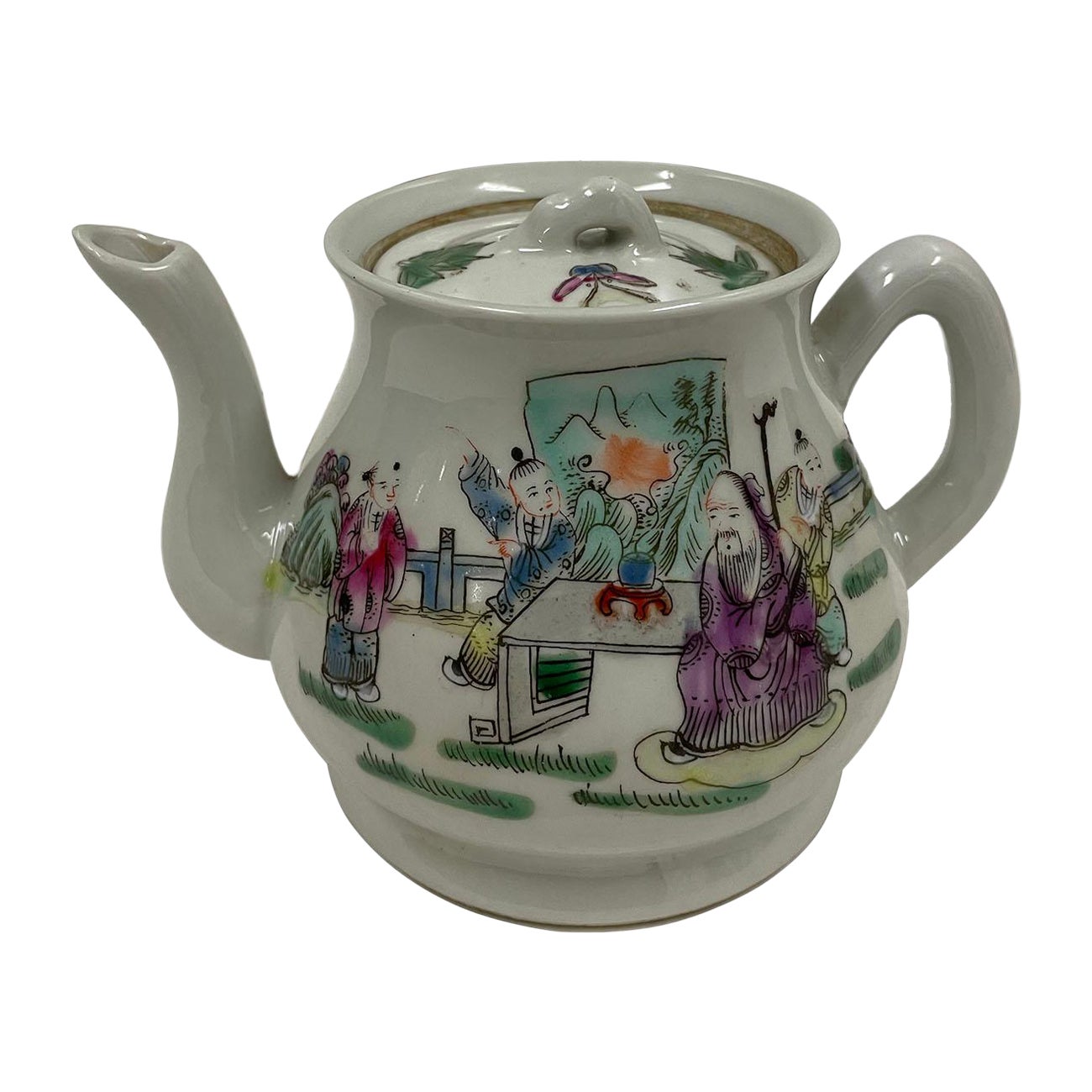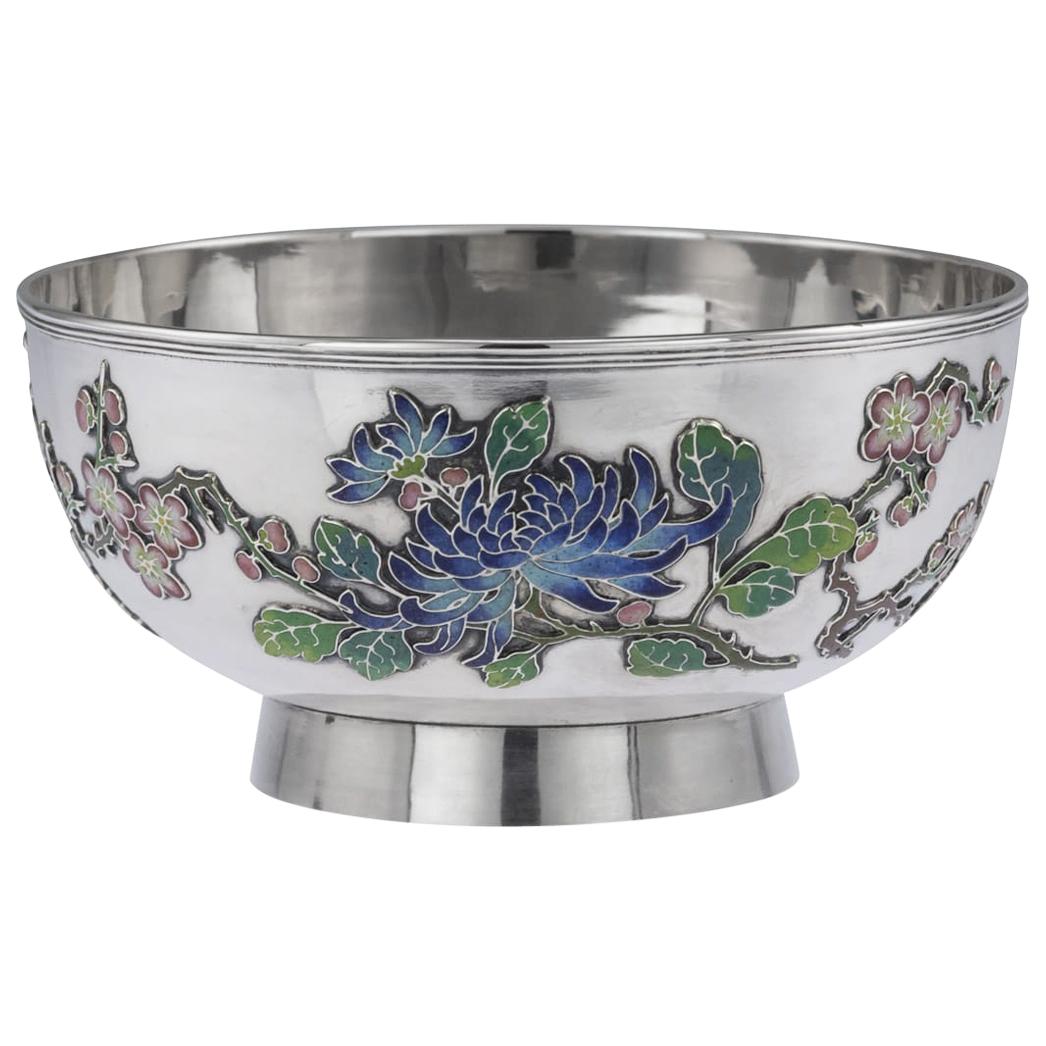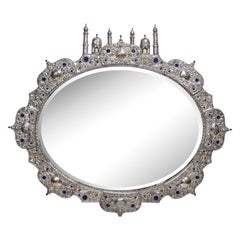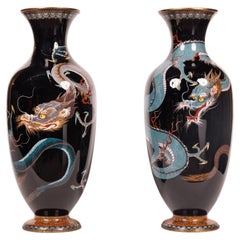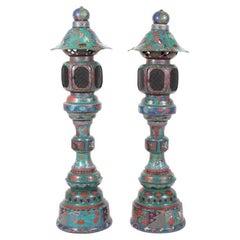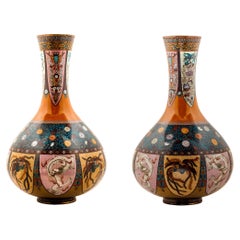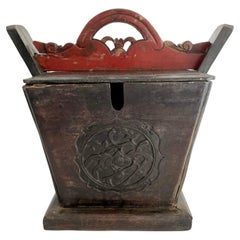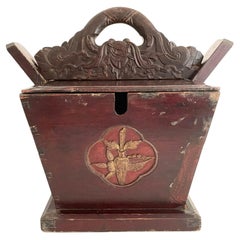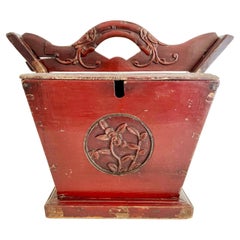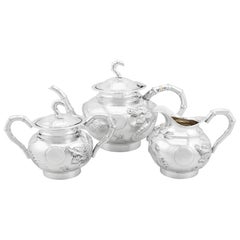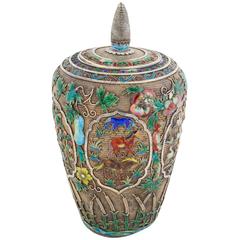
Chinese Silver Filigree and Enamel Enameled Tea Caddy
View Similar Items
Want more images or videos?
Request additional images or videos from the seller
1 of 10
Chinese Silver Filigree and Enamel Enameled Tea Caddy
$3,500List Price
About the Item
- Dimensions:Height: 7.5 in (19.05 cm)Diameter: 3.5 in (8.89 cm)
- Sold As:Set of 2
- Materials and Techniques:
- Place of Origin:
- Period:
- Date of Manufacture:20th Century
- Condition:Wear consistent with age and use. Small dent to the bottom underside.
- Seller Location:Queens, NY
- Reference Number:1stDibs: f179821610315836373fs
About the Seller
5.0
Vetted Professional Seller
Every seller passes strict standards for authenticity and reliability
Established in 1980
1stDibs seller since 2016
63 sales on 1stDibs
Typical response time: 1 hour
Authenticity Guarantee
In the unlikely event there’s an issue with an item’s authenticity, contact us within 1 year for a full refund. DetailsMoney-Back Guarantee
If your item is not as described, is damaged in transit, or does not arrive, contact us within 7 days for a full refund. Details24-Hour Cancellation
You have a 24-hour grace period in which to reconsider your purchase, with no questions asked.Vetted Professional Sellers
Our world-class sellers must adhere to strict standards for service and quality, maintaining the integrity of our listings.Price-Match Guarantee
If you find that a seller listed the same item for a lower price elsewhere, we’ll match it.Trusted Global Delivery
Our best-in-class carrier network provides specialized shipping options worldwide, including custom delivery.More From This Seller
View AllRare and Magnificent Thai Silver, Gold & Jeweled Palace Mirror for Indian Palace
Located in Queens, NY
A rare and magnificent silver, gold & jeweled palace mirror, certainly made for an Indian Maharaja, circa 1900.
A special commission for an Indian palace from the late Victorian era, likely produced in Thailand.
This palace size hand-hammered Indian mirror is made from pure silver. A truly exceptional work of art with floral design topped with miniatures structures...
Category
Antique Early 1900s Indian Wall Mirrors
Materials
Lapis Lazuli, Malachite, Multi-gemstone, Gold, Silver
Large Pair of Meiji Period Japanese Cloisonne Enamel Double Dragon Vases
Located in Queens, NY
A large pair of Meiji Period Japanese Cloisonne Enamel Double Dragon Vases, 19th century.
Japanese cloisonne enamel dragon vases are highly ...
Category
Antique 19th Century Japanese Meiji Metalwork
Materials
Copper, Enamel
Large Pair of Japanese Cloisonne Enamel Lanterns Attributed to Kaji Tsunekichi
Located in Queens, NY
A Large Pair of Japanese Cloisonne Enamel Lanterns Attributed to Kaji Tsunekichi, Edo Period, 19th century
Japanese cloisonne lanterns were made during the Meiji period, from the late 19th to early 20th century, and were often used as decorative lighting fixtures in temples and shrines.
Kaji Tsunekichi (1866-1916) was a Japanese cloisonné artist who was active in the late 19th and early 20th centuries. He was born in Tokyo and learned the art of cloisonné from his father, Kaji Sataro, who was also a cloisonné artist. He was renowned for his mastery of the shippo-yaki technique, which involves creating intricate designs with thin wires on a metal base before filling in the spaces with enamel.
Tsunekichi was known for his exceptional technical skills and his ability to create intricate designs with vibrant colors. His works often featured nature motifs, such as flowers, birds, and fish, which were rendered in a highly detailed and naturalistic style. He also experimented with new techniques, such as plique-à-jour, a type of cloisonné that creates a stained-glass effect.
Tsunekichi's works were highly prized during his lifetime and continue to be sought after by collectors today. He won numerous awards for his cloisonné creations, including a Gold Medal at the 1900 Exposition Universelle in Paris. His works are characterized by their fine wirework, precise enamel application, and attention to detail.
Some of Tsunekichi's most famous works include a pair of large cloisonné vases...
Category
Antique 19th Century Japanese Edo Metalwork
Materials
Copper, Enamel
Large Pair of Japanese Cloisonne Enamel Vases Attributed to Honda Yasaburo
Located in Queens, NY
A large pair of Japanese Cloisonne Enamel vases attributed to Honda Yasaburo, 19th century.
Finley decorated with the rich enamel colors of orange and green, these vases are desig...
Category
Antique 19th Century Japanese Meiji Metalwork
Materials
Copper, Enamel
Exceptional Chinese Carved Coral Figural Group of a Boat with Eight Immortals
Located in Queens, NY
An exceptional Chinese carved coral figural group or statue of a boat with eight immortals. The boat in a form of a carved dragon wi...
Category
Early 20th Century Chinese Sculptures and Carvings
Materials
Coral
Exceptional Large Chinese Carved Coral Figural Group Statue of Female Immortals
Located in Queens, NY
An exceptional and large Chinese carved coral figural group / statue of female Immortals.
Very finely carved, very large and heav...
Category
Early 20th Century Chinese Sculptures and Carvings
Materials
Coral
You May Also Like
Large 19th Century Chinese Carved Tea Caddy
Located in Atlanta, GA
Beautifully carved Qing dynasty tea caddy from Elmwood (yumu), with floral motifs. Beautiful original patina, the body is in a brown lacquer and the handle is finished with an red color lacquer. The large size is very usual and was used in a large family compound. The tea caddy is designed to hold and keep warm, large tea pot filled with tea. The tea pot’s spout comes out the front opening for pouring. The horizontal bar used as the container’s handle has a pivoting lock when open, the handle bar can be removed and closing of the pivoting lock, the handle is secure for use. The wooden tea caddy...
Category
Antique Late 19th Century Chinese Sculptures and Carvings
Materials
Elm
Large 19th Century Chinese Carved Tea Caddy
Located in Atlanta, GA
Beautifully carved Qing dynasty tea caddy from Elmwood (yumu), with floral motifs and finished with an oxblood color lacquer. The handle has a finely carved bat motif, which symbolizes good fortune. The large size is very usual and was used in a large family compound. The tea caddy is designed to hold and keep warm, large tea pot filled with tea. The tea pot’s spout comes out the front opening for pouring. The horizontal bar used as the container’s handle has a pivoting lock when open, the handle bar can be removed and closing of the pivoting lock, the handle is secure for use. The wooden tea caddy...
Category
Antique Late 19th Century Chinese Sculptures and Carvings
Materials
Elm
Large 19th century Chinese Carved Wooden Tea Caddy
Located in Atlanta, GA
Beautifully carved Qing dynasty tea caddy from Elmwood (yumu), with floral motifs and finished with an oxblood color lacquer. The large size is very usual and was used in a large family compound. The tea caddy is designed to hold and keep warm, large tea pot filled with tea. The tea pot’s spout comes out the front opening for pouring. The horizontal bar used as the container’s handle has a pivoting lock when open, the handle bar can be removed and closing of the pivoting lock, the handle is secure for use. The wooden tea caddy...
Category
Antique Late 19th Century Chinese Sculptures and Carvings
Materials
Elm
1900s Chinese Export Silver Three-Piece Tea Service
Located in Jesmond, Newcastle Upon Tyne
An exceptional, fine and impressive antique Chinese export silver three-piece tea service; an addition to our diverse silver teaware collection.
This exceptional antique Chinese silver tea set...
Category
Antique Early 1900s Chinese Chinese Export Tea Sets
Materials
Silver
Fine Chinese Hardwood Tea Tray, c. 1850
Located in Chicago, IL
This 19th-century serving tray exemplifies Qing-dynasty refinement with simplicity of form and an emphasis on natural materials. Crafted of a darkly colored hardwood, the elegant tra...
Category
Antique Mid-19th Century Chinese Minimalist More Asian Art, Objects and ...
Materials
Hardwood
Chinese Enameled Copper Bowl
Located in Buenos Aires, Argentina
Chinese enameled copper bowl
Republican Period 1912-1949
Perfect condition with natural wear
Without restorations.
Category
Vintage 1930s Chinese Chinese Export More Asian Art, Objects and Furniture
Materials
Enamel
$640 Sale Price
20% Off
Recently Viewed
View AllMore Ways To Browse
Chinese Silver Filigree
Chinese Silver Tea Caddy
Chinese Calligraphy Signboard
Yak Butter
Antique Chinese Chopsticks
Apsara Statue
Opium Container
Vintage Folding Hand Fan
Antique Japanese Kiseru
Burmese Temple Box
Chinese Kingfisher
Tibetan Drum
Antique Chinese Embroidered Shoes
Burmese Temple Bell
Carnelian Parrot
Chinese Hair Comb
Circa 1900 India Silver
Forged Iron Double Clamp Black Jack
